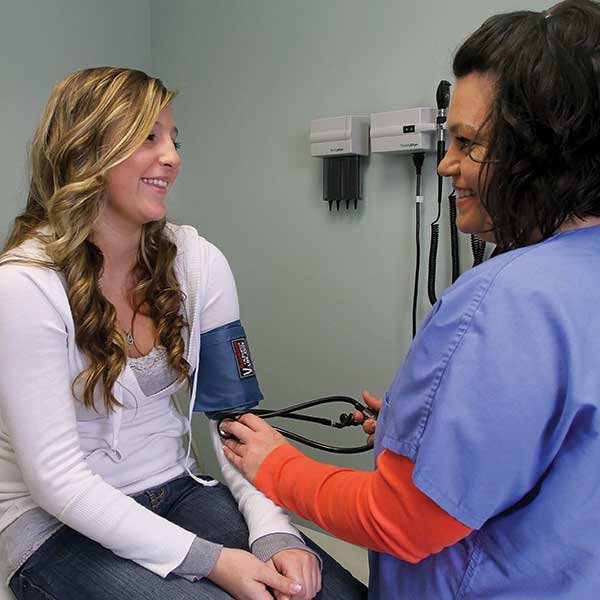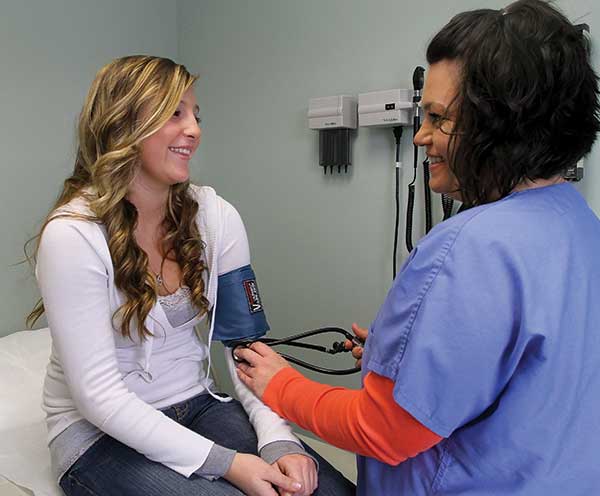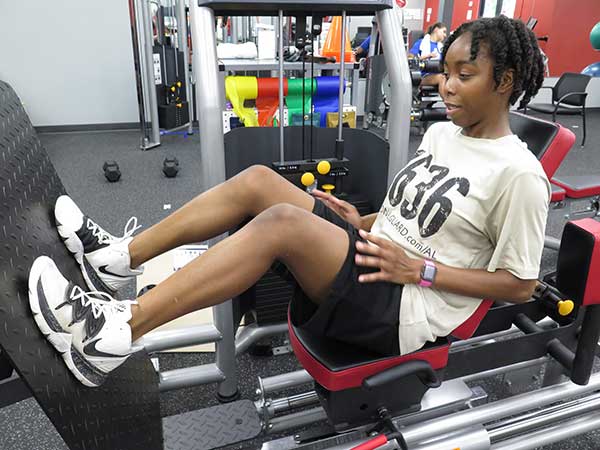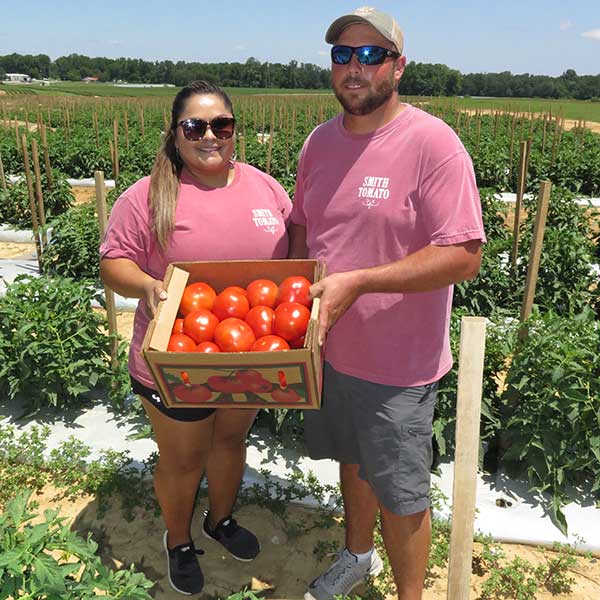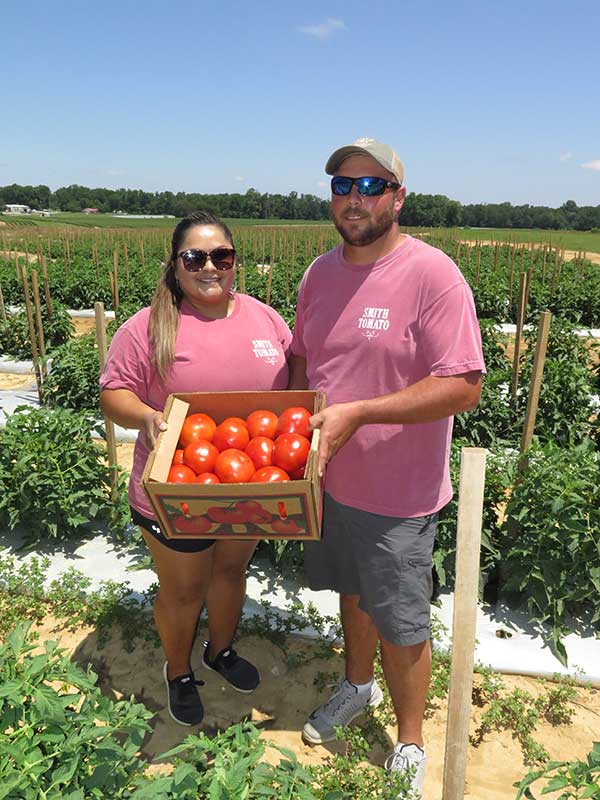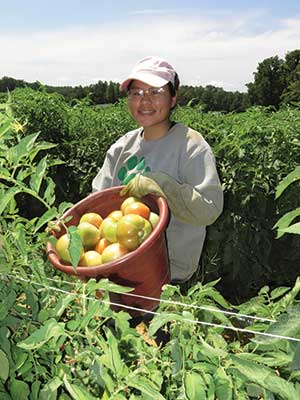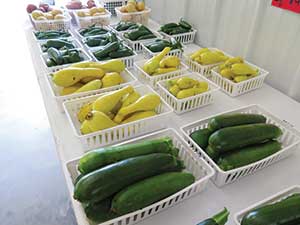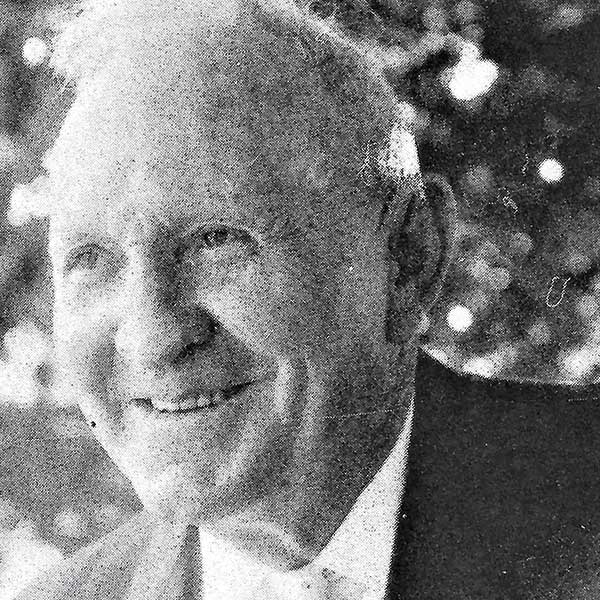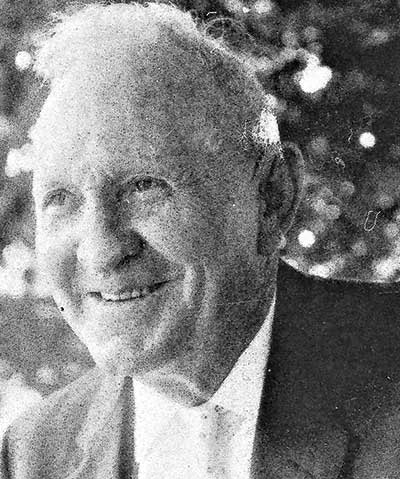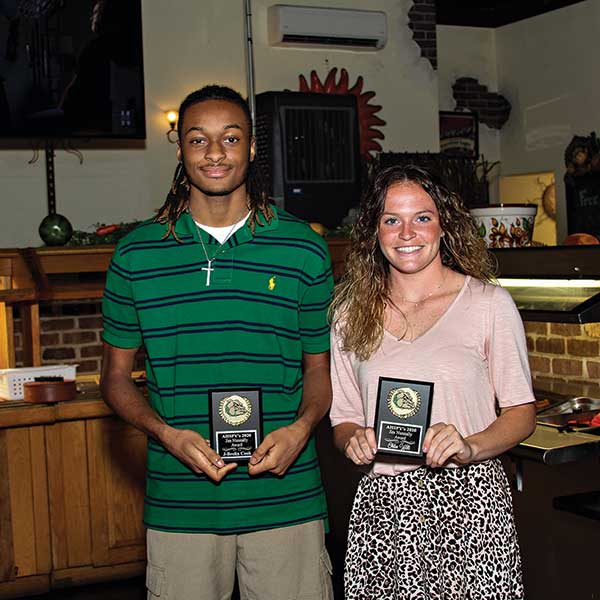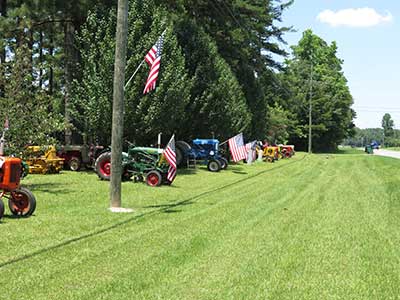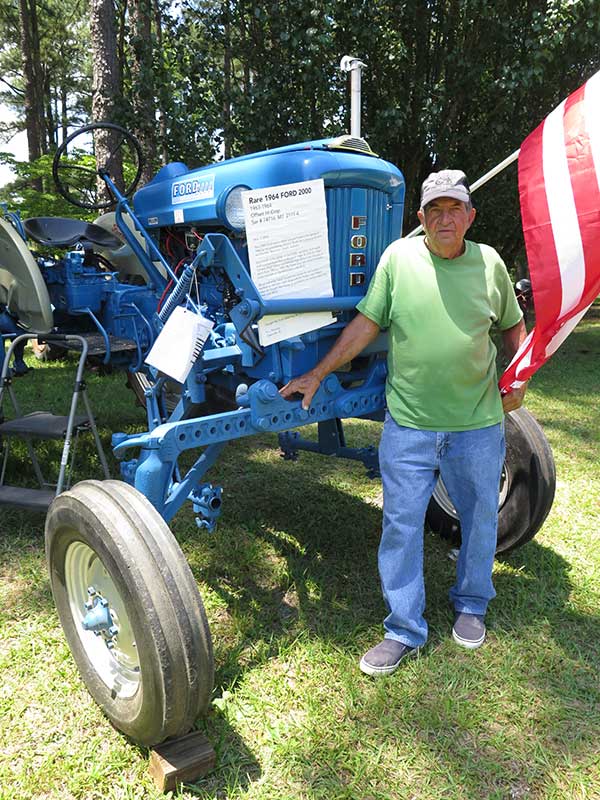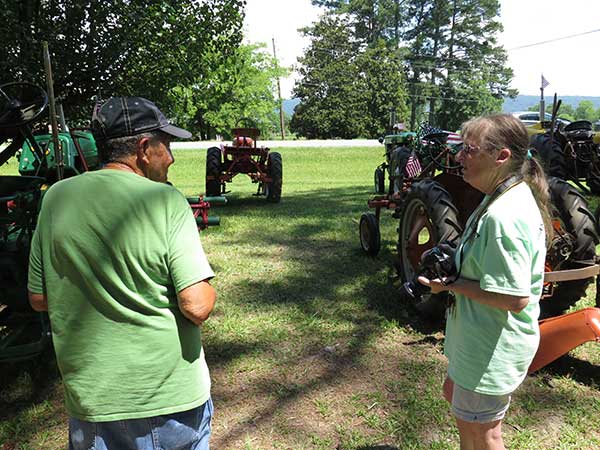Local medical community rises to meet the challenge
Story by Scottie Vickery
Photos by Graham Hadley
Submitted photos

Long before COVID-19 found its way to St. Clair County, medical professionals in the area were preparing for its arrival. They had been monitoring the progression of the virus, which began in December 2019 in Wuhan, China, even before it first made its way to the United States in January.
Alabama got its first reported case on March 13, and the virus hit St. Clair County four days later. By mid-July, the state’s numbers had risen to well over 58,000 cases with nearly 1,200 deaths. At that time, St. Clair County had nearly 700 cases and four deaths.
“The biggest thing in the beginning was dealing with the panic and uncertainty,” said Dr. Michael Dupre’, who led the coronavirus response efforts for Northside Medical Associates. “When you use a word like pandemic, it gets people’s attention.”
The virus brought challenges that medical personnel had not faced before, and local healthcare officials raced to implement new procedures, alleviate concerns and remove obstacles for their staffs. At the same time, they had to treat existing patients while trying to diagnose and care for those with COVID-19.
Rapidly changing information was an initial challenge since much was still unknown. Lisa Nichols, administrator of St. Vincent’s St. Clair, said that by the time guidelines from sources such as the Centers for Disease Control and the Alabama Department of Public Health were communicated with the staff, new information and guidelines had been released.
“There were a lot of changes,” she said. “Our staff works in 12-hours shifts, and by the time we got information out to everyone, it had changed again. Our team was very resilient and did an excellent job of going with the flow.”
The immediate concern was keeping patients and medical personnel safe, according to Nichols, Dupre’ and Dr. Barry Collins of Pell City Internal and Family Medicine (PCIFM).
“This was like nothing I’ve ever experienced before,” Collins said. “To be honest, I was afraid when all this hit, the fear would deplete our staff. They hung in there fearlessly, though, because they knew they were essential to the community.”
Dupre’ said staff members were initially concerned that they would contract the virus and take it home to family members who were at risk for complications, such as aging parents or an immunocompromised child. Employees with chronic health issues or family members who were at-risk were reassigned to other areas where it was safer. The level of anxiety was unlike anything I’d ever seen before,” he said, “There were fears, but our duty and commitment to our community did not change one bit.”
Implementing safeguards
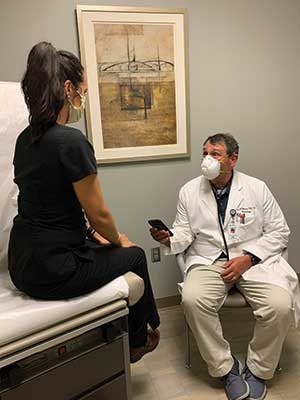
Once initial fears were addressed, the focus was on treating patients – those with COVID-19 and those without – while preventing the spread of the virus. The first step was to identify potential coronavirus cases before patients encountered anyone else.
“We have so many entry points to the facility, so we changed the way you come into our hospital,” Nichols said, adding that separate entrances and parking lots were designated for patients and associates. Door screeners at each entrance checked everyone for fever and symptoms of the virus, including cough or shortness of breath. Anyone who is identified as having symptoms of the virus is directed into a separate waiting area while waiting for the triage nurse.
At PCIFM, patients were initially screened over the telephone when they called to make appointments, and staff members conducted temperature screenings and checked oxygen levels and symptoms at the door. Anyone who was a potential positive, based on either check, was directed to the practice’s drive-thru testing lane. “We were able to do COVID testing without having the patient leave the car,” Collins said.
Northside patients were screened at the door of all four locations – Pell City, Moody, Springville and Trussville – and only one entrance and exit was used at each office, Dupre’ said. At the Pell City campus, the building housing the ACCEL Urgent Care Center was designated for respiratory illnesses and COVID-19 testing and treatment. Anyone with symptoms of the virus, or those who had been exposed, were directed there.
In addition, hospital and medical office personnel all over the county implemented additional cleaning processes to cut down on the spread of the virus. “We’re constantly changing scrubs and masks and rotating stethoscopes,” said Dr. Jason Thompson, a cardiologist with Birmingham Heart Clinic, which has an office at Northside’s Pell City campus. “Exam rooms are being sanitized between every visit, and it’s not just changing the paper on the table. We’re wiping walls down with Clorox and wiping the table down with Clorox.”
The virus brought additional hurdles, as well. Schools and day care centers closed, leaving medical personnel scrambling for child care. Northside and PCIFM set up day care programs at their offices so their employees could continue to focus on caring for the community.
“We called it Camp Northside,” Dupre’ said of the child care program that operated for three months. “If our employees didn’t have anyone to take care of their kids, we took care of them here,” he said.
Collins said their day care program was largely operated by family members of staff as well as volunteers. “The community really rallied around that idea,” he said. “They were donating lunches and teaching materials for the children.”
Hard decisions
There were other dilemmas, as well. “Probably one of the hardest things we had to do was go to a no-visitors policy,” Nichols said. At first, patients at the hospital were limited to two visitors, but as guidelines continued to change, it went down to one within a few days. Not long after, no visitors were allowed, except for end-of-life situations and patients that required caregivers.
“We struggled with how to get people information about their loved ones. We encouraged patients to connect with their families via social media,” Nichols said, adding that the hospital purchased tablets for patients without smartphones. They also implemented a process to ensure that the nursing staff contacted one family member or caregiver to provide updates, as long as the patient gave permission.
Even though that added more work for a nursing staff that was already stretched, the team didn’t balk at that or any other additional duties, according to Shiloh Swiney, director of nursing for the hospital. “They all chipped in and said, ‘We’re going to get this done. We’re going to get these patients taken care of,’” she said. “We have a strong nursing group, and the morale has been very high.”
The suspension of elective dental and medical procedures caused additional concerns. “Initially, we rescheduled all elective procedures and did Telehealth visits for routine checks of less acute patients,” Collins said. “Not everyone had access to the internet and some patients weren’t tech savvy and weren’t comfortable with talking on camera. We had to educate our patients.”
While some of Thompson’s patient appointments could be handled virtually, other cardiac patients needed to continue to be seen in person. In order to limit exposure in waiting rooms, Thompson said that his office asked those patients to come alone unless a caregiver was truly necessary. That sometimes limited the information he received.
“I’ve got some patients who, if their wives didn’t come with them, I wouldn’t know anything,” Thompson said. “The wife is who would tell me if he had been short of breath. Now, a lot of times I’ll pick up the phone, call the wife and put her on speaker. That’s how I’ve brought them back in the exam room without crowding the waiting room.”
Patients with chronic conditions who were concerned about catching the virus often delayed seeking treatment, which led to other problems. “Our ER volume was almost cut in half,” Nichols said. “Some of the patients we’re seeing now are sicker because they waited too long to get the care they need. We want everyone to know that we are a safe place, and we are absolutely taking steps to keep everyone safe.” High-touch areas are being cleaned many times throughout the day, and some chairs in waiting rooms are blocked off to ensure patients have plenty of room between them, she said.
Thompson, especially, saw the effects that fear and suspending elective procedures, like having a stent inserted, had on his patients. In some cases, patients had strokes that could have been prevented, or they lost heart function after a heart attack that might possibly have been restored if they had sought help faster.
“I’ve had patients who sat on their chest pains for fear of the ER,” he said. “With a heart attack, time is muscle. If we can get to you within 12 hours of chest pain, we can salvage heart muscle.” Although his patients’ cardiovascular disease makes them high risk for coronavirus complications, their heart issues still need to be addressed. “We have to be careful, but we cannot ignore their underlying disease,” Thompson said.
A community rallies together
Long before Gov. Kay Ivey issued a statewide mask order in mid-July, all patients and staff at St. Vincent’s, Northside, PCIFM and the Birmingham Heart Clinic were required to wear masks, which were provided for patients who didn’t have them. When supplies were low in the early days of the pandemic, employees at Northside got busy.

“Our staff made thousands and thousands of masks,” Dupre’ said. “We had hundreds of patients at home making masks with their own fabric and their own money. We’ve always thought the world of our patients, but so many went above and beyond.”
Patients weren’t the only ones offering support. Dupre’, Collins and Nichols all said they were overwhelmed by the love shown by the community as a whole. Individuals, churches and businesses from all over the county provided meals; offered masks, hand sanitizer and cleaning products; and prayed.
Several nights, Swiney said, individuals and church groups gathered in the back parking lot of the 40-bed hospital to pray. “There are so many people out there who wanted to help, and to know they were praying for each one of us here was amazing,” she said.
“The community was absolutely awesome,” Collins said, adding that donated meals meant the staff didn’t have to leave the building and could focus on the crisis at hand. “It reminds you about what is great about the human spirit,” Dupre’ added.
Moving forward
Early efforts to flatten the curve helped because, even though people continued to get sick, the cases were spread out over a period of weeks, so the hospital was not overwhelmed. “Fortunately for St. Clair County, we’re rural enough to spread out,” Dupre’ said. “That’s really helped, and we haven’t had the impact other counties have had.”
Early on, Dupre’ said, Northside looked at designating one of the buildings at the Pell City campus to house overflow patients from the hospital, if necessary. “Thank God it was never that bad,” he said.
It could still reach that point, however, if people relax too much. Alabama saw a resurgence in cases in late June and early July after the state began reopening, and Collins said he worries about the looming flu season. Although flu season is typically considered to be October to March or April, it’s not uncommon to see cases in September.
“There’s been a real spike in (COVID) cases, and now we’re almost back to square one,” Collins said. “The only way we can get this virus to go away is to starve the virus from the host.”
That’s why it’s critical that everyone continues to social distance, wash hands frequently, avoid group gatherings and wear face coverings to prevent the spread. “Wearing a mask can really protect the people you interact with,” Nichols said. “A lot of asymptomatic people are testing positive, even though they have no symptoms. If they’re wearing masks, the likelihood of spreading the virus is reduced.”
Dupre’ said masks are especially crucial for high-risk patients. “We know the masks work,” he said. “We’ve had staff here who have swabbed thousands and thousands of patients, and we haven’t had one catch COVID,” he said in early July. He added that people need to continue to isolate themselves if they are sick and wash hands frequently, especially when they have come in contact with surfaces outside their homes.
Although Thompson said masks have meant that he has had to dramatically slow down his speech so older patients who are hard of hearing can understand him, he agrees that wearing them and taking other precautions is imperative. “We have to take this seriously,” he said. “I think it has become apparent to us that this is not going away tomorrow. We will continue to deal with this for a year or more.”
He added that, while the growing death toll from the virus is tragic, it’s not the only tragedy of this pandemic. Thompson has seen widowed patients suffer depression after being isolated from friends and family for months on end. People haven’t been able to gather for funerals, which has had a negative effect on the grieving process. Couples looking forward to starting their lives together have had to postpone weddings.
“All of this is part of the human tragedy we’re all living through,” he said. “We are social animals, and it’s interesting how you begin to crave that interaction with family and friends. I’m not pretending this is going to be easy, but it can be done.”
Collins said he is hopeful that the newfound awareness among the public about how germs are transmitted will have lasting benefits even after COVID-19 goes away. “Right now, this virus is a curse, but if it changes behavior, it may mean a decrease in other communicable diseases, such as the flu,” he said. “It may be somewhat of a silver lining beyond this nightmare.”















